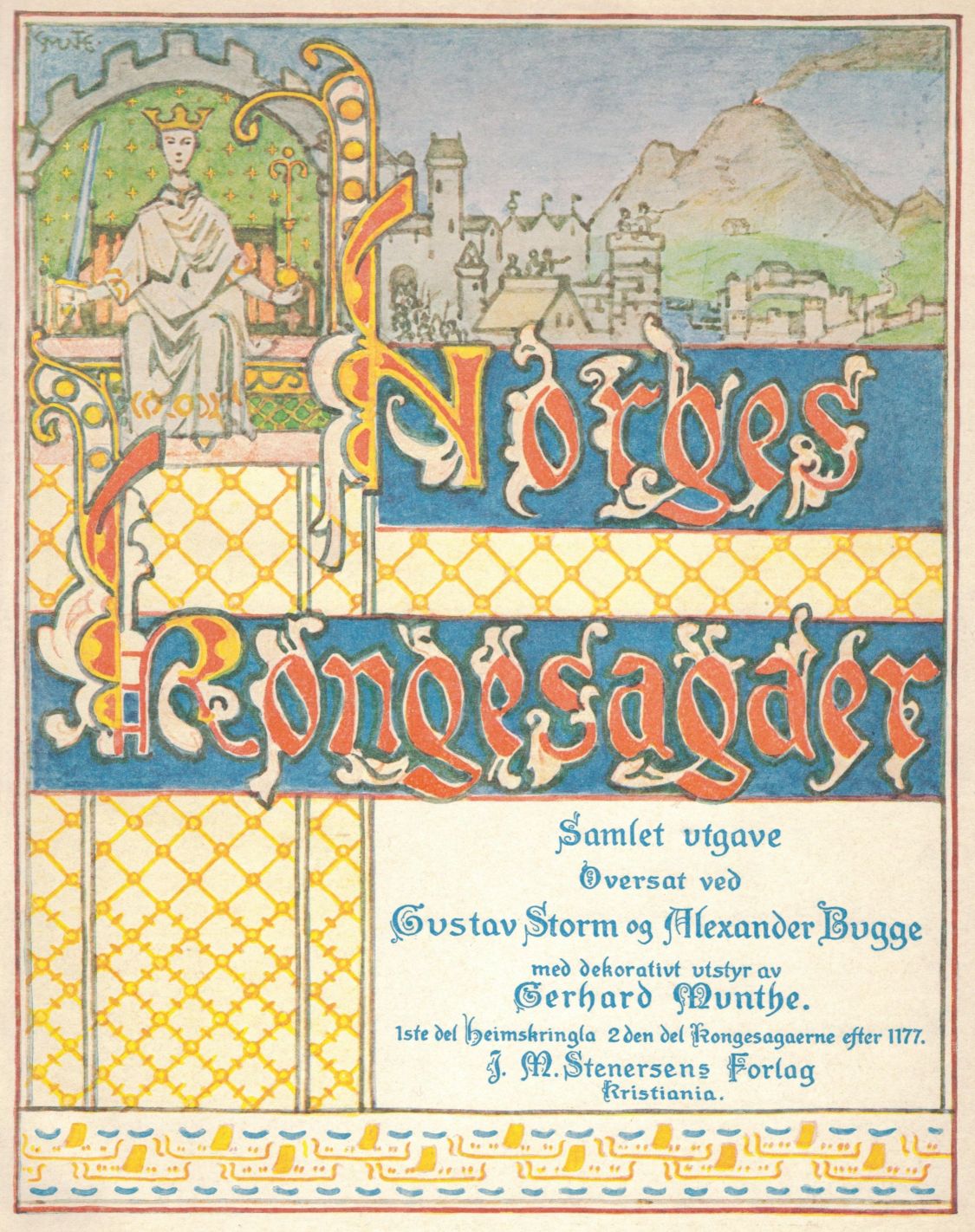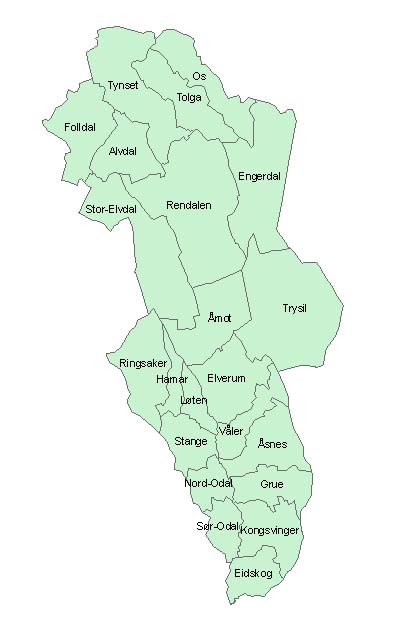|
Gustav Storm
Gustav Storm (18 June 1845 – 23 February 1903) was a Norwegian historian, a professor at the Royal Frederick University in Christiania from 1877. He was a driving force in the research of Scandinavian history and literature of the Middle Ages. Personal life Storm was born in Rendalen, Hedmark, as the son of Ole Johan Storm and Hanna Jørgine Mathilde Breda. The family moved to Lardal, Vestfold, where his father was a vicar. When Gustav was five years old, his father died, and the family subsequently moved to Christiania (now Oslo). He was a brother of linguist Johan Storm and a cousin of zoologist Vilhelm Storm. He died at Bygdøy in 1903. Career Storm finished his secondary education in 1862. He studied philology at the Royal Frederick University in Christiania, graduating as cand.philol. in 1868. He then worked as teacher for some years, and also carried out research in the fields philology and history. Among his works were ''Snorre Sturlassøns Historieskrivning ... [...More Info...] [...Related Items...] OR: [Wikipedia] [Google] [Baidu] |
Rendalen
Rendalen is a List of municipalities of Norway, municipality in Innlandet county, Norway. It is located in the Traditional districts of Norway, traditional district of Østerdalen. The administrative centre of the municipality is the village of Bergset. Other villages in the municipality include Hanestad, Otnes, Sjølisand, Unset, Norway, Unset, Åkre, Innlandet, Åkre, and Åkrestrømmen. The municipality is the 13th largest by area out of the 356 municipalities in Norway. Rendalen is the 294th most populous municipality in Norway with a population of 1,722. The municipality's population density is and its population has decreased by 12.1% over the previous 10-year period. General information The municipality of Rendalen was established on 1 January 1965 when the old municipalities of Ytre Rendal (population: 1,913) and Øvre Rendal (population: 1,629) were merged. On 1 January 1984, the unpopulated Spekedalen valley was transferred from Tynset Municipality to Rendalen. Name ... [...More Info...] [...Related Items...] OR: [Wikipedia] [Google] [Baidu] |
Hedmark
Hedmark () was a county in Norway before 1 January 2020, bordering Trøndelag to the north, Oppland to the west, Akershus to the south, and Sweden to the east. The county administration is in Hamar. Hedmark and Oppland counties were merged into Innlandet county on 1 January 2020, when Norway's former 19 counties became 10 bigger counties / regions Hedmark made up the northeastern part of Østlandet, the southeastern part of the country. It had a long border with Sweden to the east ( Dalarna County and Värmland County). The largest lakes were Femunden and Mjøsa, the largest lake in Norway. Parts of Glomma, Norway's longest river, flowed through Hedmark. Geographically, Hedmark was traditionally divided into: Hedemarken (east of the lake Mjøsa), Østerdalen ("East Valley" north of the town Elverum), and Solør / Glåmdalen (south of Elverum) and Odal in the very south. Hedmark and Oppland were the only Norwegian counties with no coastline. Hedmark also hoste ... [...More Info...] [...Related Items...] OR: [Wikipedia] [Google] [Baidu] |
Battle Of Hafrsfjord
The Battle of Hafrsfjord ( no, Slaget i Hafrsfjord) was a great naval battle fought in Hafrsfjord sometime between 872 and 900 that resulted in the unification of Norway, later known as the Kingdom of Norway. After the battle, the victorious Viking chief Harald Fairhair proclaimed himself the first king of the Norwegians, merging several petty kingdoms under a single monarch for the first time. Significance Although most scholars currently tend to regard the unification as a process lasting centuries, rather than being the result of a single battle, the Battle of Hafrsfjord ranks high in the popular imagination of Norway. It was the conclusion of King Harald I of Norway's declaration to become the sole ruler of Norway. This battle may well have been the largest in Norway up to that time and for a substantial time afterward. It was formerly believed that this battle was the decisive event in the unification of Norway. According to Snorri's saga, King Harald controlled large parts ... [...More Info...] [...Related Items...] OR: [Wikipedia] [Google] [Baidu] |
Snorri Sturluson
Snorri Sturluson ( ; ; 1179 – 22 September 1241) was an Icelandic historian, poet, and politician. He was elected twice as lawspeaker of the Icelandic parliament, the Althing. He is commonly thought to have authored or compiled portions of the '' Prose Edda'', which is a major source for what is today known as Norse mythology, and '' Heimskringla'', a history of the Norwegian kings that begins with legendary material in '' Ynglinga saga'' and moves through to early medieval Scandinavian history. For stylistic and methodological reasons, Snorri is often taken to be the author of '' Egil's saga''. He was assassinated in 1241 by men claiming to be agents of the King of Norway. Biography Early life Snorri Sturluson was born in (commonly transliterated as Hvamm or Hvammr) as a member of the wealthy and powerful Sturlungar clan of the Icelandic Commonwealth, in AD 1179. His parents were ''Sturla Þórðarson the Elder'' of ''Hvammur'' and his second wife, ''Guðný Böðvarsdó ... [...More Info...] [...Related Items...] OR: [Wikipedia] [Google] [Baidu] |
Norwegian Language
Norwegian ( no, norsk, links=no ) is a North Germanic language spoken mainly in Norway, where it is an official language. Along with Swedish and Danish, Norwegian forms a dialect continuum of more or less mutually intelligible local and regional varieties; some Norwegian and Swedish dialects, in particular, are very close. These Scandinavian languages, together with Faroese and Icelandic as well as some extinct languages, constitute the North Germanic languages. Faroese and Icelandic are not mutually intelligible with Norwegian in their spoken form because continental Scandinavian has diverged from them. While the two Germanic languages with the greatest numbers of speakers, English and German, have close similarities with Norwegian, neither is mutually intelligible with it. Norwegian is a descendant of Old Norse, the common language of the Germanic peoples living in Scandinavia during the Viking Age. Today there are two official forms of ''written'' Norwegian, (lite ... [...More Info...] [...Related Items...] OR: [Wikipedia] [Google] [Baidu] |
History
History (derived ) is the systematic study and the documentation of the human activity. The time period of event before the History of writing#Inventions of writing, invention of writing systems is considered prehistory. "History" is an umbrella term comprising past events as well as the memory, discovery, collection, organization, presentation, and interpretation of these events. Historians seek knowledge of the past using historical sources such as written documents, oral accounts, art and material artifacts, and ecological markers. History is not complete and still has debatable mysteries. History is also an Discipline (academia), academic discipline which uses narrative to describe, examine, question, and analyze past events, and investigate their patterns of cause and effect. Historians often debate which narrative best explains an event, as well as the significance of different causes and effects. Historians also debate the historiography, nature of history as an end in ... [...More Info...] [...Related Items...] OR: [Wikipedia] [Google] [Baidu] |
Primary Sources
In the study of history as an academic discipline, a primary source (also called an original source) is an artifact, document, diary, manuscript, autobiography, recording, or any other source of information that was created at the time under study. It serves as an original source of information about the topic. Similar definitions can be used in library science and other areas of scholarship, although different fields have somewhat different definitions. In journalism, a primary source can be a person with direct knowledge of a situation, or a document written by such a person. Primary sources are distinguished from secondary sources, which cite, comment on, or build upon primary sources. Generally, accounts written after the fact with the benefit of hindsight are secondary. A secondary source may also be a primary source depending on how it is used. For example, a memoir would be considered a primary source in research concerning its author or about their friends characte ... [...More Info...] [...Related Items...] OR: [Wikipedia] [Google] [Baidu] |
Store Norske Leksikon
The ''Great Norwegian Encyclopedia'' ( no, Store Norske Leksikon, abbreviated ''SNL''), is a Norwegian-language online encyclopedia. The online encyclopedia is among the most-read Norwegian published sites, with more than two million unique visitors per month. Paper editions 1978–2007 The ''SNL'' was created in 1978, when the two publishing houses Aschehoug and Gyldendal merged their encyclopedias and created the company Kunnskapsforlaget. Up until 1978 the two publishing houses of Aschehoug and Gyldendal, Norway's two largest, had published ' and ', respectively. The respective first editions were published in 1907–1913 (Aschehoug) and 1933–1934 (Gyldendal). The slump in sales for paper-based encyclopedias around the turn of the 21st century hit Kunnskapsforlaget hard, but a fourth edition of the paper encyclopedia was secured by a grant of ten million Norwegian kroner from the foundation Fritt Ord in 2003. The fourth edition consisted of 16 volumes, a ... [...More Info...] [...Related Items...] OR: [Wikipedia] [Google] [Baidu] |
Philology
Philology () is the study of language in oral and written historical sources; it is the intersection of textual criticism, literary criticism, history, and linguistics (with especially strong ties to etymology). Philology is also defined as the study of literary texts as well as oral and written records, the establishment of their authenticity and their original form, and the determination of their meaning. A person who pursues this kind of study is known as a philologist. In older usage, especially British, philology is more general, covering comparative and historical linguistics. Classical philology studies classical languages. Classical philology principally originated from the Library of Pergamum and the Library of Alexandria around the fourth century BC, continued by Greeks and Romans throughout the Roman/Byzantine Empire. It was eventually resumed by European scholars of the Renaissance, where it was soon joined by philologies of other European ( Germanic, Celti ... [...More Info...] [...Related Items...] OR: [Wikipedia] [Google] [Baidu] |
Examen Artium
Examen artium was the name of the academic certification conferred in Denmark and Norway, qualifying the student for admission to university studies. Examen artium was originally introduced as the entrance exam of the University of Copenhagen in 1630. The University of Copenhagen was the only university of Denmark-Norway until The Royal Frederick University in Christiania was founded in 1811. In Norway, examen artium was formally discontinued after the 1982 class (but the term is still sometimes used informally to denote the diploma from today's " videregående skole"). Norway Typically after their tenth and final year of compulsory primary school education, students applied for admission to a three-year programs of studies, called "lines" at schools called ''gymnas'' within their counties. The curricula for the lines included a core of general studies topics, including Norwegian, mathematics, history, English, physical education, and one natural science subject. The curri ... [...More Info...] [...Related Items...] OR: [Wikipedia] [Google] [Baidu] |
Norsk Biografisk Leksikon
is the largest Norwegian biographical encyclopedia. The first edition (NBL1) was issued between 1921 and 1983, including 19 volumes and 5,100 articles. It was published by Aschehoug with economic support from the state. bought the rights to NBL1 from Aschehoug in 1995, and after a pre-project in 1996–97 the work for a new edition began in 1998. The project had economic support from the Fritt Ord Foundation and the Ministry of Culture, and the second edition (NBL2) was launched in the years 1999–2005, including 10 volumes and around 5,700 articles. In 2006 the work for an electronic edition of NBL2 began, with support from the same institutions. In 2009 an Internet The Internet (or internet) is the global system of interconnected computer networks that uses the Internet protocol suite (TCP/IP) to communicate between networks and devices. It is a ''internetworking, network of networks'' that consists ... edition, with free access, was released by together with ... [...More Info...] [...Related Items...] OR: [Wikipedia] [Google] [Baidu] |




.jpg)

